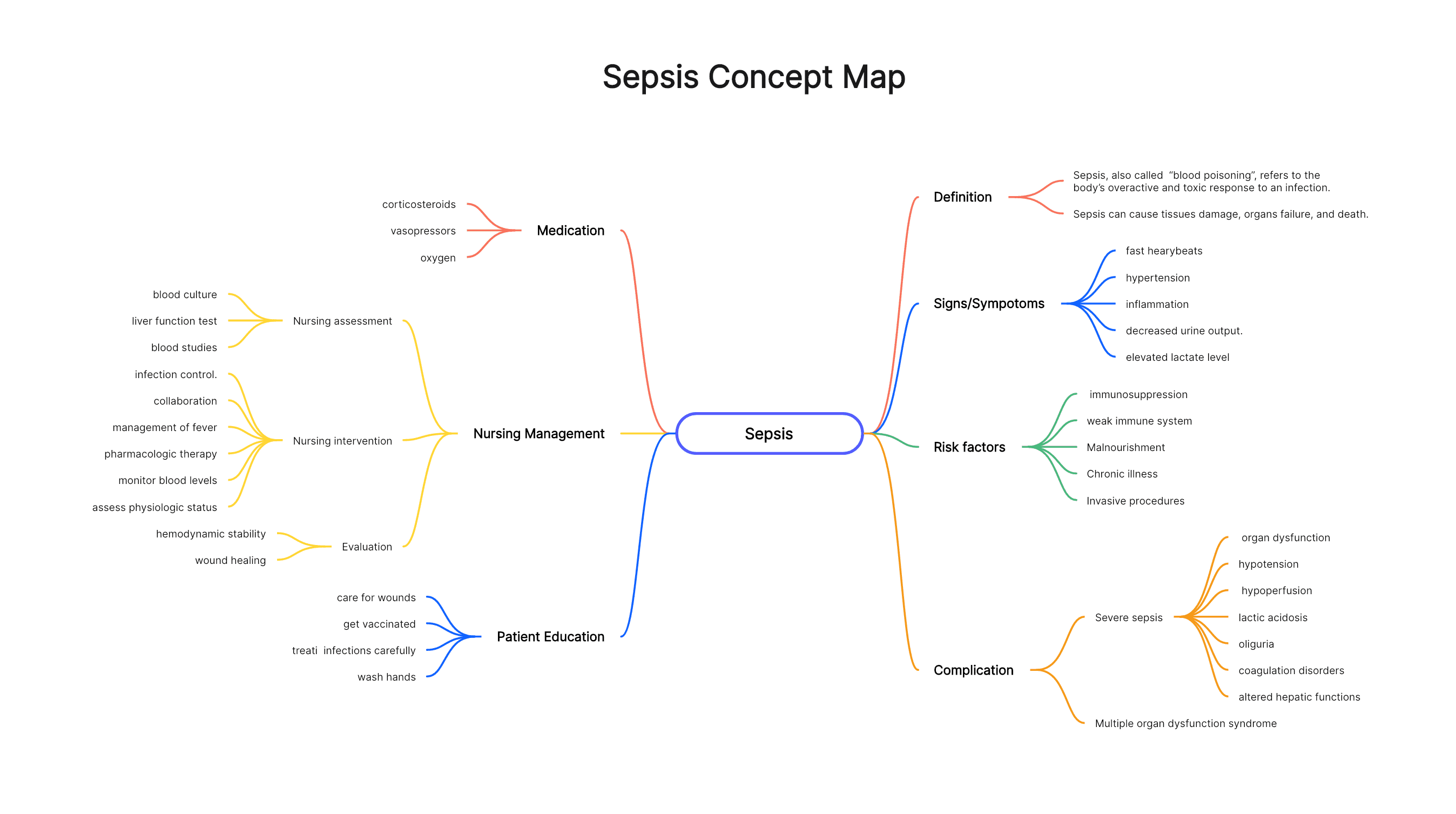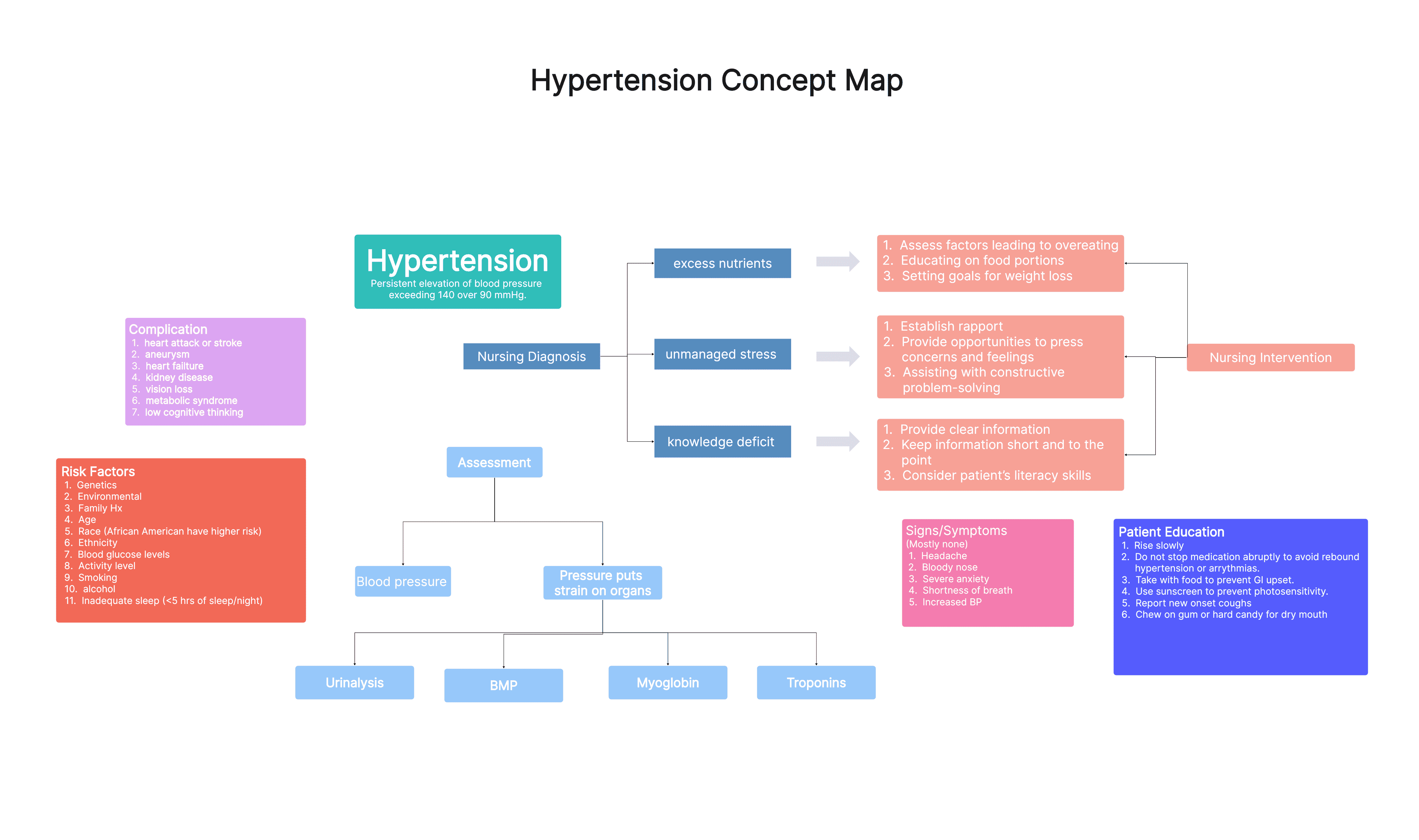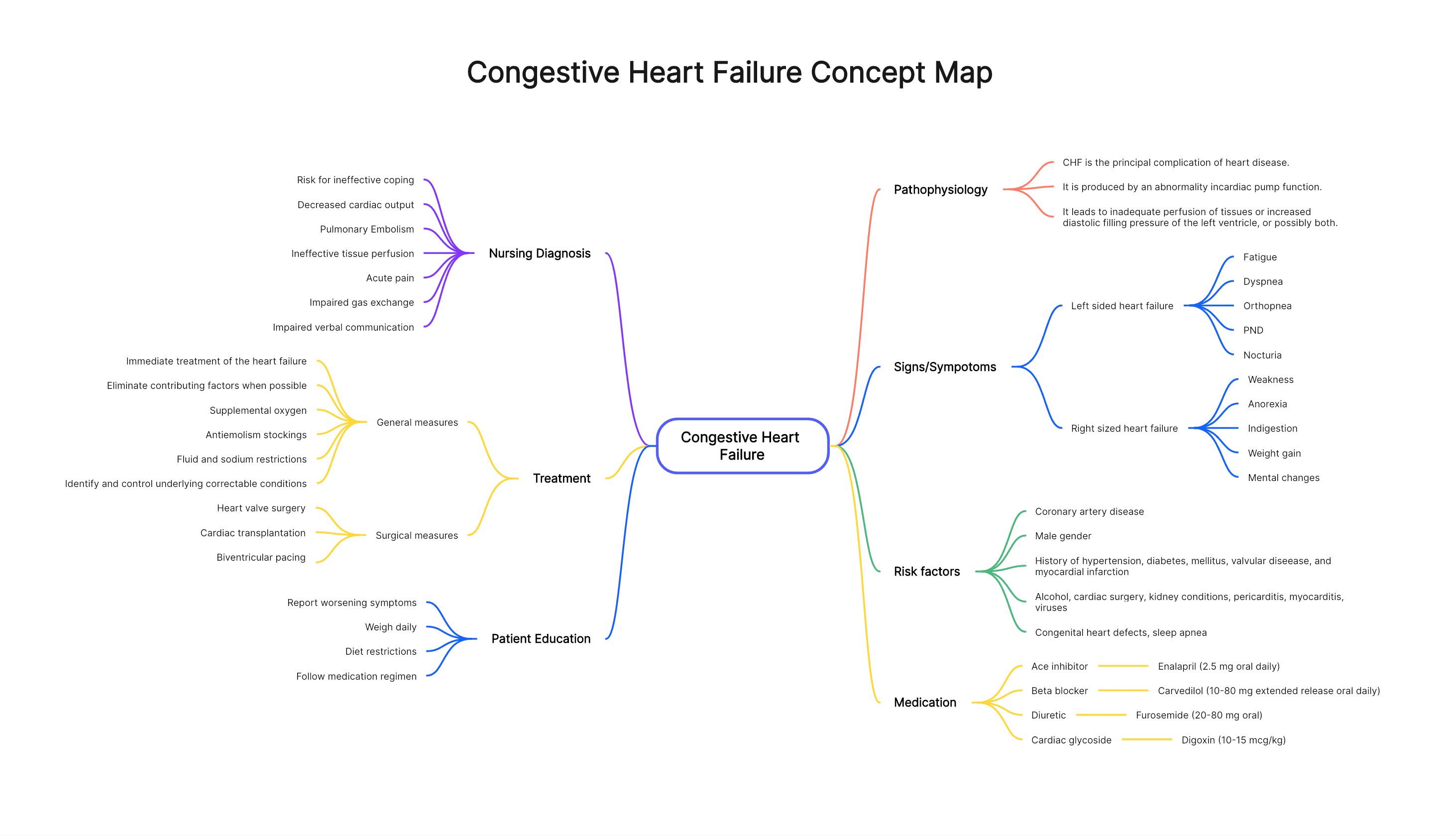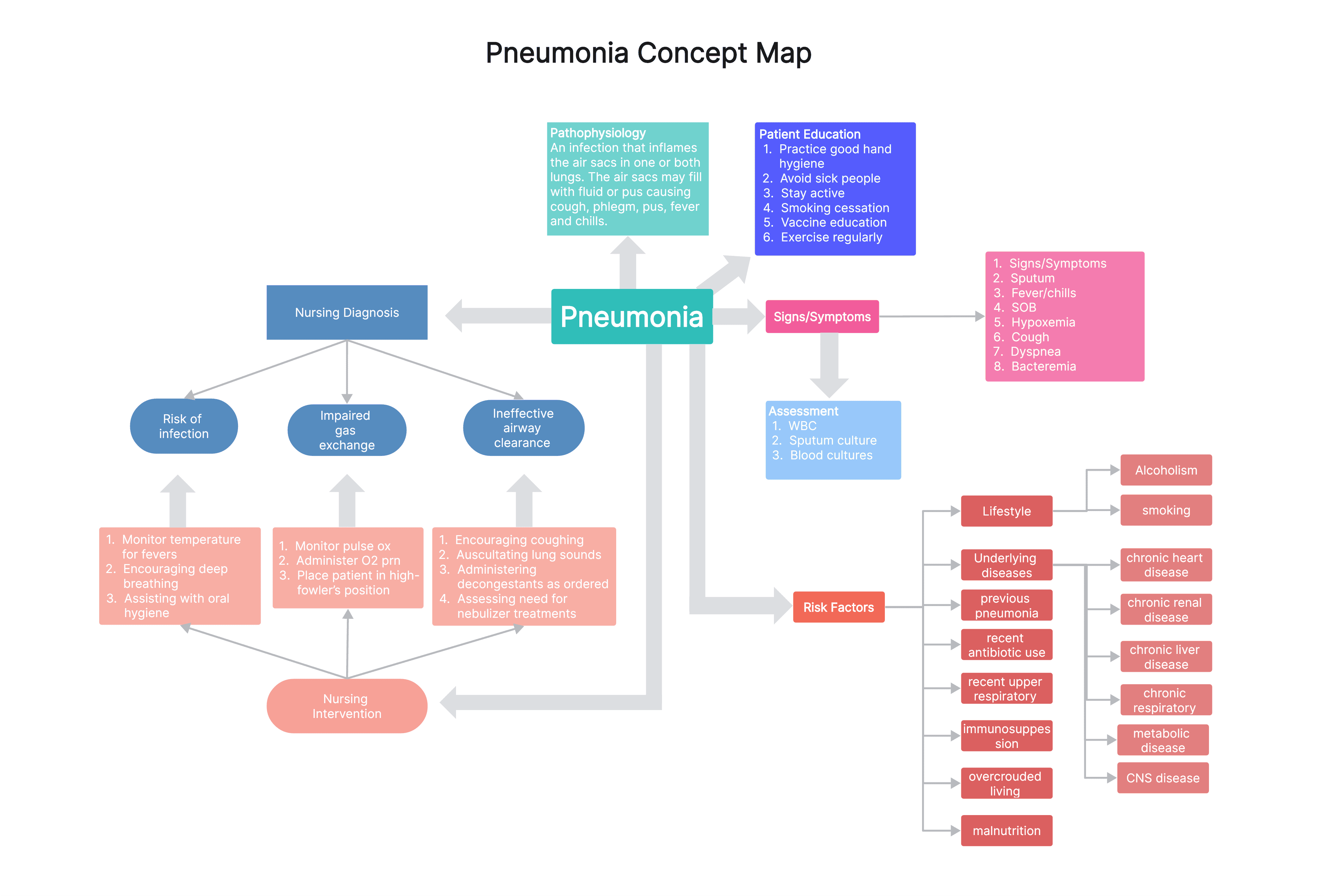About This Template
Feeling overwhelmed by Sepsis? Our FREE Sepsis Concept Map Template offers a clear visual framework to organize information and gain a deeper grasp of this life-threatening condition.
What is Sepsis?
Sepsis is a medical emergency that occurs when the body's response to an infection injures its own tissues and organs. It's a serious complication of an infection, not the infection itself. When your body fights an infection, it releases chemicals into the bloodstream to inflame and isolate the infected area. However, in sepsis, this inflammatory response goes awry, triggering a chain reaction throughout your body. This widespread inflammation can damage healthy tissues and organs, leading to shock, multiple organ failure, and even death.
Stages of Sepsis:
Sepsis can progress through different stages, each with increasing severity:
- Infection: This is the starting point, where a bacterial, fungal, or viral infection occurs somewhere in the body.
- SIRS (Systemic Inflammatory Response Syndrome): This is the body's initial inflammatory response to the infection. While SIRS is a normal reaction to fight infection, it can sometimes progress to sepsis.
- Sepsis: In this stage, the inflammatory response becomes uncontrolled, damaging healthy tissues and organs.
- Severe Sepsis: This stage is characterized by organ dysfunction, where one or more organs begin to fail due to the ongoing inflammation.
- Septic Shock: This is the most severe stage of sepsis. It's a life-threatening condition where blood pressure drops dangerously low, and the body is unable to deliver sufficient oxygen to its organs.
Symptoms and Causes of Sepsis
Symptoms: Sepsis can cause a wide range of symptoms, and their severity can vary depending on the individual. Early signs may be subtle and easily mistaken for other illnesses. However, prompt recognition and treatment are crucial. Here's a breakdown of potential symptoms at different stages:
- Early Sepsis:
- Fever or chills
- Rapid breathing (more than 22 breaths per minute)
- Increased heart rate (more than 90 beats per minute)
- Confusion or altered mental state
- Pain or discomfort
- Fatigue
- Later Sepsis:
- Difficulty breathing
- Decreased urine output
- Skin rash
- Nausea or vomiting
Causes: Any infection can lead to sepsis, but some common sources include:
- Pneumonia (lung infection): This is a leading cause of sepsis, especially in older adults and people with chronic illnesses.
- Urinary tract infections (UTIs): Untreated UTIs can progress to the kidneys and bloodstream, increasing the risk of sepsis.
- Skin infections: These can range from minor cuts and scrapes to more serious infections like cellulitis.
- Intra-abdominal infections (appendicitis, peritonitis): Infections within the abdomen can spread quickly and trigger sepsis.
- Catheter-related infections: These can occur from catheters inserted into the bloodstream, urinary tract, or other body cavities.
Risk Factors for Sepsis:
Certain factors can increase your risk of developing sepsis, including:
- Weakened immune system: People with compromised immune systems, such as those with chronic illnesses, HIV/AIDS, or undergoing cancer treatment, are more susceptible to infections that can lead to sepsis.
- Very young or old age: Infants and older adults have weaker immune systems, making them more vulnerable to infections and sepsis.
- Chronic medical conditions: Having underlying health problems like diabetes, kidney disease, or heart failure can increase your risk of sepsis.
- Recent surgery or invasive procedures: These can introduce bacteria into the bloodstream, raising the risk of infection and sepsis.
FAQ About the Sepsis Concept Map
Who can benefit from using this template?
Anyone interested in understanding sepsis, including patients, caregivers, and individuals concerned about their health.
What information should be included in the concept map?
Definition of sepsis, symptoms, causes, risk factors (immunosuppression, chronic illnesses), pathophysiology (inflammatory response, organ dysfunction), treatment options (antibiotics, fluids, source control), and patient education tips (infection prevention, early recognition).
Can I customize this template?
Absolutely! This is a flexible tool. Adapt it to include specific details relevant to your situation or area of interest.
Free Download Your Sepsis Concept Map Template Today!
Empower yourself with knowledge! Download our FREE template today and unlock the power of visual learning. Click the Use Template button on this page to access this valuable resource.
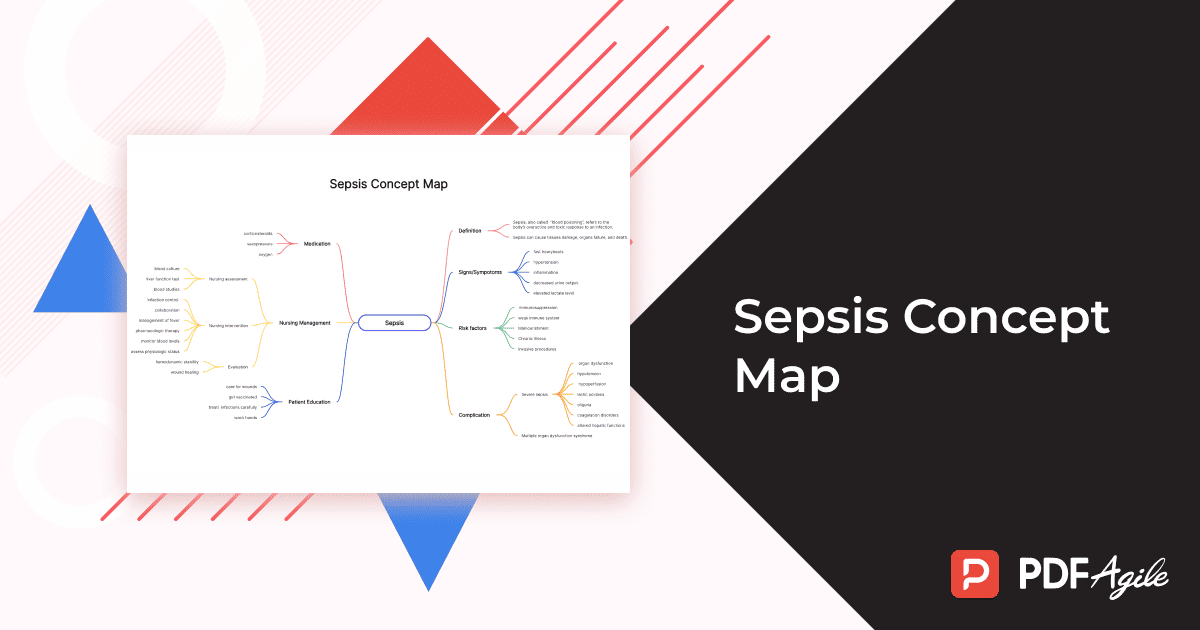
Visualize, Understand, Prevent Sepsis
Sepsis concept maps empower both patients and healthcare professionals to understand and potentially prevent this serious condition. Download your free template and start visualizing a healthier future!

